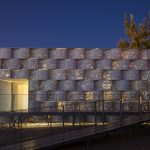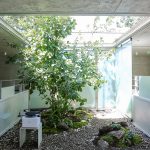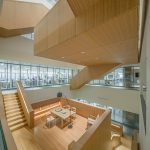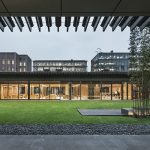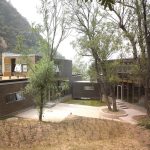2019 Memorial
Yung Ho Chang, FAIA
Founding Partner and Principal Architect, Atelier Feichang Jianzhu
Professor and former Head, Architecture Department, MIT
Professor, Tongji University

Educated both in China and in the US, Chang received Master of Architecture degree from the University of California at Berkeley in 1984. Since 1992, he has been practicing in China and established Atelier Feichang Jianzhu (FCJZ) with Lijia Lu in 1993. He has won a number of prizes, such as First Place in the Shinkenchiku Residential Design Competition in 1986, a Progressive Architecture Citation Award in 1996, the 2000 UNESCO Prize for the Promotion of the Arts, and the Academy Award in Architecture from American Academy of Arts and Letters in 2006, and 2016 China Architecture Media Award Practical Achievement Prize.
He has published a number of books and monographs, including Exhibition as Construction Experiment in English, World Architecture special issue – The Modernity of Making: Yung Ho Chang in Chinese/English, Yung Ho Chang / Atelier Feichang Jianzhu: A Chinese Practice in English/French and Yung Ho Chang: Luce chiara, camera oscura in Italian.
He participated in many international exhibitions of art and architecture, including six times in the Venice Biennale since 2000. He has taught at various architecture schools in the USA and China; he was a Professor and Founding Head of Graduate Center of Architecture at Peking University from 1999 to 2005; he held the Kenzo Tange Chair at Harvard GSD in 2002 and the Eliel Saarinen Chair at Michigan in 2004. From 2011 to 2017, he was a Pritzker Prize Jury member.
Recently, FCJZ has been recognized as one of the 100+ Best Architecture Firms 2019 by Domus magazine.
Architecture of the South
In terms of human habitation, the opposition of East and West is actually generated from the difference between the south and the north. One only needs to compare the architectural space in the south and the north to make the ninety-degree turn. The urban legacy of courtyard dwellings in traditional Chinese cities as basic fabric reflects the time honored life style of living outdoor. Rooms without roofs or only with roofs accommodate that particular way of habitation. Yuanzi, or courtyard, is one of the signature outdoor architectural spaces in China and there are many others, for instance: Langxia, space under a veranda or covered walkway; Yanxia, space under cantilevered eaves; Tangwu, living room open in the front; Xuan, living room open on all sides, etc. FCJZ as a design practice that always has a well integrated research component in our projects, we ask questions such as:
Is outdoor architecture heritage still relevant today?
What are the reincarnations of these traditional space and spatial structure in contemporary cities in terms of meaning, definition, scale, density, and form?



